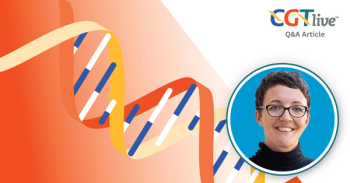
Bruce Cree, MD, PhD, MAS, on the Importance of Understanding Disease Pathobiology for Novel Treatment Approaches
The clinical research director of the UCSF Multiple Sclerosis Center discussed the difference between developing targeted therapies for well-understood diseases like SCD and less well-understood diseases like MS.
This is the fifth part of an interview with Bruce Cree, MD, PhD, MAS. For the first part,
“We have to keep an open mind about what we don't know about and make sure that in addition to moving forward with these types of trials that we are really pushing forward with other avenues of research to help us understand the pathogenesis of the disease. Only once we truly understand how a disease occurs in the first place—what is driving that disorder—are we going to really be able to get to the point where we can actually reverse that problem and cure the disease.”
Just a few months ago, the field of hematology was shook by the simultaneous FDA-approval of 2 gene therapy products for the treatment of sickle cell disease (SCD): Vertex Pharmaceuticals' and CRISPR Therapeutics’ exagamglogene autotemcel (exa-cel; marketed as Casgevy) and bluebird bio’s lovotibeglogene autotemcel (lovo-cel; marketed as Lyfgenia). Both therapies involve genetic modification of patients’ red blood cells to correct for the underlying mutation that causes the disease. Although the direct work done upon these therapies by the aforementioned companies was no doubt of great importance, their achievements would not have been possible without years of research done by various institutions in decades past that had clearly established the pathobiology of SCD on a genetic and molecular basis. Indeed, establishing the pathobiology of disease is often a critical step before effective targeted therapies can be developed.
Bruce Cree, MD, PhD, MAS, a professor of neurology and the clinical research director of the University of California San Francisco (UCSF) Multiple Sclerosis Center, emphasized this point in a recent interview with CGTLive® regarding the potential of chimeric antigen receptor T-cell (CAR-T) therapy to treat neurologic autoimmune diseases. Cree noted that the pathobiology of some neurologic autoimmune diseases, such as multiple sclerosis (MS), are not as well understood as SCD. For example, although it is thought that refractory cases of MS may be driven by pathogenic B-cells hidden deep in the tissue or central nervous system that are unreachable by standard-of-care treatment modalities, this is uncertain. As such, it is unclear whether targeting these B-cells with a CD19-directed CAR-T therapy will truly get at the root cause of refractory MS, or whether a different approach might make more sense. Cree highlighted this to make the point that basic research into the pathobiology of such diseases is of fundamental importance to streamline the development of novel therapies.
Newsletter
Stay at the forefront of cutting-edge science with CGT—your direct line to expert insights, breakthrough data, and real-time coverage of the latest advancements in cell and gene therapy.































